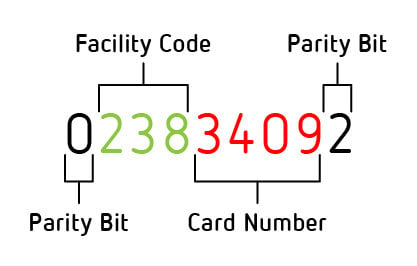A proximity card is a contactless card which can be read without insertion into a card reading device. Because they don’t require a swipe, they can be left in a wallet or purse and still serve their purpose. Prox cards look the same as the typical 30 mil PVC card but they have an embedded metallic antenna coil inside which hold the encoded data. However, other proximity products include clamshell cards, key fobs and stickers.
How do proximity cards work?
A proximity card is a contactless card which can be read without insertion into a card reading device. Because they don’t require a swipe, they can be left in a wallet or purse and still serve their purpose. Prox cards use a low 125 kHz radio frequency to transmit to a door access reader. When the card is placed on the reader, the card’s unique strand of numbers is passed to the access control panel, which verifies if the number matches an approved number in the internal database. If the card number is approved, the door will be unlocked.
The science behind the scenes:
Bit Formats – There are a number of bit formats that can be used, for example: 26, 32, 34, 35 and up to 40. The important thing to know is that 26bit is the standard (Wiegand) while others are brand specific. Brand specific, or closed formats, are not any more secure, they are just a way to make you come back to buy all your future cards.
The card number encoded is made up of 4 parts:
1. Parity bits – You don’t need to know about parity bits, just know they are encoded there for added security. They appear at the beginning and end of your encoded data.
2. The Facility code – When you start a door access program and get prox cards for the first time, you will be given a Facility Code. This is generally a number between 1 and 255. This is used as part of the card encoding to help secure your building.
3. The card number – This is exactly how it sounds. You start you prox card program at card #1 and go up from there.
Proximity Card Encoding Example:

